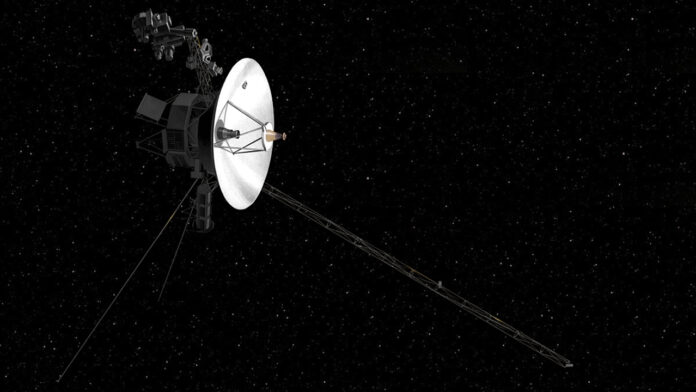NASA’s Voyager 2 won’t retire this year, as expected, but rather spend another three years collecting data from interstellar space.
The agency’s Jet Propulsion Laboratory (JPL) this week announced plans(Opens in a new window) to boost the probe’s backup power, keeping its five science instruments operating until 2026.
Launched in 1977 just days after Voyager 1 to study the outer planets, Voyager 2 fulfilled its primary mission by 1989, and has since been on an extended journey to explore outer space beyond the Sun’s heliosphere—a bubble-like region that shields the solar system from significant amounts of radiation. Voyager 1 and Voyager 2 are the only spacecraft to operate outside that bubble.
“The science data that the Voyagers are returning gets more valuable the farther away from the Sun they go, so we are definitely interested in keeping as many science instruments operating as long as possible,” Linda Spilker, Voyager project scientist at JPL, said in a statement.
The spacecraft power themselves with radioisotope thermoelectric generators (RTGs), which convert heat from decaying plutonium into electricity—a process that produces slightly less power each year. To compensate, engineers have turned off heaters and other non-essential systems, which has yet to impact the mission’s science output. Until now.
Voyager 2’s data-collecting instruments were on the chopping block, but JPL found a workaround. Instead of reserving the small amount of power stored in a backup circuit for a possible voltage fluctuation, the team will use it to keep all five science instruments operating.
Recommended by Our Editors
“Variable voltages pose a risk to the instruments, but we’ve determined that it’s a small risk, and the alternative offers a big reward of being able to keep the science instruments turned on longer,” according to Suzanne Dodd, Voyager’s project manager at JPL. “We’ve been monitoring the spacecraft for a few weeks, and it seems like this new approach is working.”
If that approach works, NASA may apply it to Voyager 1, which currently has four instruments after a fifth one failed early in the mission. A decision about whether to turn off any instruments on Voyager 1 won’t happen until sometime in 2024, NASA says.
Get Our Best Stories!
Sign up for What’s New Now to get our top stories delivered to your inbox every morning.
This newsletter may contain advertising, deals, or affiliate links. Subscribing to a newsletter indicates your consent to our Terms of Use and Privacy Policy. You may unsubscribe from the newsletters at any time.
Hits: 0












